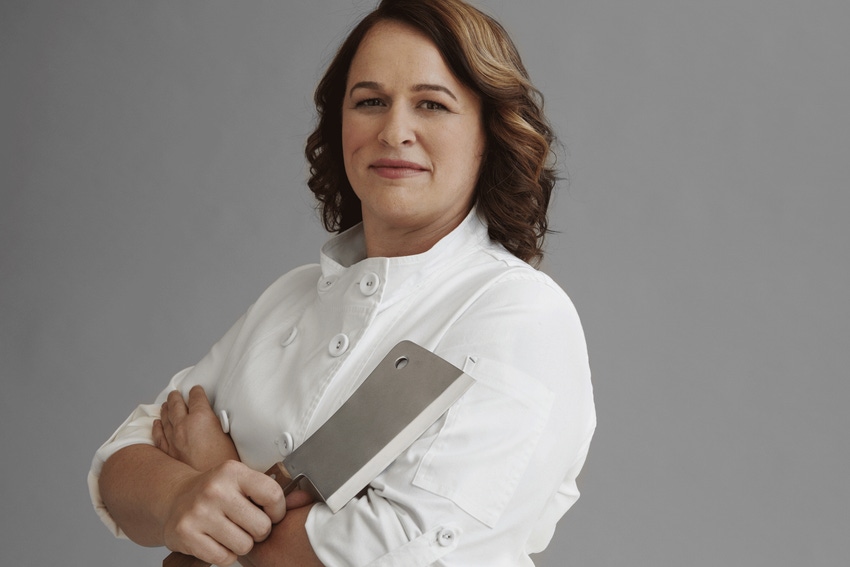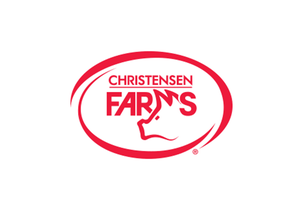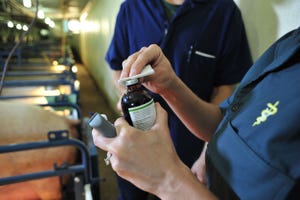As consumers seek quality and knowledge in their purchases at the grocer meat case, retailers and meat cutters need to up their game to be able to provide both.
June 14, 2017

Pork quality means different things to different people — what one person looks for in a pork chop may be far different from what the next person desires. “Give the consumer what they want” has long been the mantra, but that is not as easy as it might sound. Pork producers and pork promoters obviously want to sell more pork product, but it is advantageous to all parties involved to make the consumers’ pork dining experience unforgettable so that they will return for more and more tasty pork.
Kari Underly, a third-generation butcher and author, sees a void in the amount and quality of knowledge that consumers have access to as they pursue pork nirvana at the grocer meat case.
Education is at the heart of what Underly does as principal and CEO of Range Inc., located in Fulton Market, the heart of Chicago’s meat packing district. Range has been helping companies in the fresh meat industry since 2002 by developing award-winning merchandising tools and market strategies to promote their products.
“There is a big gap in the knowledge that retail grocer meat cutters and meat counter clerks have,” she says. “You have the clerks who are the ‘hello, how may I help you?’ who have extremely limited knowledge. To be able to provide them with the basic customer service information such as identifying cuts and how to recommend how to cook” is necessary. “They don’t have to be chefs, but we’ve always had that gap at the meat case. It’s just education. I’ve been in this business a long time, and it always comes back to the need for education at the meat case.”
She is currently working on an online meat certification program for meat clerks and meat cutters for grocery retailers to get them up to speed on basic knowledge of all meat cuts, not just pork. Just as consumers are paying their hard-earned money for a quality product, grocers have the same thinking in regard to their staff.
“We’re seeing more and more municipalities are pushing for a minimum wage increase, and if we’re going to pay meat clerks at $15 an hour, then they need to be trained and have some knowledge and certification,” Underly says.
As for meat cutters, the skill set varies by the type of and grocery store chain. “Some grocers bring in all case-ready meat. Some bring in case-ready pork and cut their own beef, so it’s a little bit of a different mix for meat cutters” when it comes to the education that is necessary.
Underly knows of which she speaks. Some people are said to have been born with a silver spoon, but Underly may have been born with a silver meat cleaver instead.
“I guess you can say that I never had a chance,” she says, sharing her lineage: Both grandmothers, one grandfather and her dad were all butchers. She grew up on the retail side and put herself through college by cutting meat. Upon completion of a three-year apprenticeship program, she was disheartened with the meat-cutting opportunities presented in the late 1980s and early ’90s. “Case-ready pork was a big thing at the time,” she says.
Not wanting to work in a slaughterhouse, and seeing that meat-cutting jobs were dying, she went to work for the National Beef Cattleman’s Association for a few years, helping the beef industry add value to the carcass, introducing the flat iron steak and helping create the Denver cut and Sierra cut. “Most of my professional career outside of that has been based around training and education, helping farmers and ranchers understand what their animals are,” she says. “You see a lot more people wanting to sell local. That’s not going away, and you’re seeing larger producers trying to tap into that trend, going with a specific breed like the Angus did. You’ve got Duroc and Berkshires that are popular.”
Pork’s advantages
Underly sees the flexibility of pork and the size of hogs as putting pork at an advantage for grocers that have a meat cutter at a local store. “Going ‘local’ doesn’t just mean growing the hog locally, it also means local jobs,” she says.
A trend of younger people getting into butchering has Underly excited. “They’re making food with their hands, but the knowledge just isn’t there. Like my dad is retired, so he can’t pass it on. I’m not in the stores, so I can’t pass it on.” As mentioned before, Underly spent three years as an apprentice, “and those opportunities just don’t exist for a lot of people who want to learn meat cutting these days.”
Smoking is growing in popularity, and Underly says that a pork butt lends itself well to smoking and making pulled pork, for instance, but a clerk or in-store meat cutter has to be available “to guide the customer to the best cut and to the best way to use it.”
Times have changed, pigs have changed, consumers have changed, as have their tastes. “They [consumers] wanted the lean, lean, lean pork cut,” she says, “and when I cut into a chop from one of the heritage breeds — I’ll be blunt, a ‘fatty’ hog — I can see why they didn’t want that.” The view on fat has evolved, “and we’re starting to breed fat back into the pigs.”
As National Pork Board’s Steve Larsen says (see Page 18) pork quality means different things to different people, and Underly agrees. “It all depends on how you want to define pork quality,” she says. “For some consumers it’s lean, and that’s quality. Others might be looking for prime pork that has more intramuscular fat. I had a client, and we put in a Berkshire pork program, and it was just like my eyes opened up, and my taste buds just exploded because it was the fat. It was like ‘Oh yea, that’s what pork used to taste like.’”
For Underly, quality pork means having pork with a little more fat in it, while others will not like the cuts with more fat, once again stressing the need for knowledgeable people to be working the grocery store meat counter to steer the customer to the cuts and dining experience that they desire.
As consumers’ desire for quality varies, the raw product and the knowledge of the meat cutter behind the counter can limit or expand the pork pleasures that can be offered. “If they’re getting in whole hogs, they have much more flexibility that they can offer,” she says. She favors a cut she calls the pork coppa, the collar cut out of the pork butt that “to me is just heaven.” If the butcher has access to whole loins, “they buy a long-bone pork loin, meaning you’ll have a blade cap and be able to produce a tomahawk chop, so you’ll have the long bone that’s the spare rib, plus a little bit of the back rib, and this is a beautiful pork chop with some blade meat. That was my ‘aha’ moment.”
These are examples of how an experienced meat cutter can add value to the pork product, by basically using techniques that Underly says beef butchers have been using and bringing them over to the pork world. “The anatomy is the same, just going after those unique cuts,” she says. She trains people to “dig out those little extra gems” from the pork carcass.
Though she has extensive experience with beef (she authored “Art of Beef Cutting”), Underly feels the pork industry may now be leading the pack by “branding themselves differently.” Pork has been a little slower to brand a breed compared to beef with the emergence of Certified Angus Beef, “but you’re starting to see more breed-specific at the counters with Duroc and Berkshire, and I think the customer is starting to understand that a little better.” Underly credits restaurant chefs in larger population areas for aiding that growth, the ones that have the option of bringing in a whole hog to get creative with the cuts they provide their clientele.
“I love a pork tri-tip, which you rarely see,” she says, “but there is still some more value-added that can happen with pork. I think they’re doing a pretty good job.”
Adopting a nomenclature similar to that of beef cuts has helped remove some confusion at the meat case, so consumers who may like a beef rib-eye may be inclined to try a rib-eye chop, or a New York chop if they have taken a liking to a New York strip. “This helps the [meat case] employee, but it also helps the customer find a cut to their liking,” she says.
A grading system for pork, such as beef has with prime, choice and select, may help identify a quality pork cut, but Underly says that grading labels may also add confusion to the consumers’ purchase decision-making. “On the beef side, consumers could identify that Angus means quality,” she says, “so I think the breed programs on the pork side can get that same correlation. … As a butcher and someone who has been involved in the meat business, I think there should be some way to measure the pork quality through the fat in the animal. Then that can be a mechanism that you can communicate back to the producer, and hopefully they can get paid a little more for their hogs.”
Though the supply chain dictates what is ultimately available at the meat case for the consumer, Underly says large retailers can play an influential role in moving quality product.
“I work with them on introducing new cuts of meat, and different ways to merchandize the counter, and let them decide what kind of pork they would like to bring in,” she says. “When they move the amount of volume that they do, it can be very beneficial in getting new cuts in the hands of the consumer.”
Presentation goes a long way in selling, or maybe more importantly not selling, any product, and the same goes for the packaging and appearance of the meat in the display case. Underly says the flavor profile of pork offers a lot more flexibility compared to beef, which has a strong flavor profile.
“So there are a lot of ways to add value to pork — from sausage to made-in-store bacon, there are so many flavor options,” she says, allowing grocer retailers to offer a diverse meat case featuring many different options for customers.
Quality of the pork cuts and the side dish of knowledge that leaves the grocer is not the last step in ensuring that the consumer has a memorable pork dining experience when they sit down for an elegant feast of porchetta.
“We do all this great work to get this pork chop to the customer, and one or two extra minutes on the grill and it’s all over,” she says. “There’s not a lot of room for tolerance. … That’s sad when you think of all the time the producer took raising that animal, and the butcher cuts and all the time and energy that goes into producing that cut can be lost within one or two minutes.”
Leading the consumer toward simplification of seasonings, “maybe just salt and pepper, here’s a great rub to use. Teach them about cooking temp and degree of doneness,” she says, stressing the importance of using a meat thermometer.
Though the fear of trichinosis is long gone in the pork supply, some habits die hard, “and we’re getting away from overcooking pork, but for some it’s been burned into their brain, passed down from their grandmother to their mother to them. They just can’t shake it.”
NPB recommends the USDA-approved internal cooking temperature of 145 degrees F for medium-rare chops, roasts and tenderloins, followed by a three-minute rest. “I think if people cook it well, and I don’t mean ‘well-done,’ I mean cook it properly, then they won’t need solutions added to the pork to have a great eating experience.”
Most consumers do have the luxury of today’s technology, so even if the meat counter clerk lacks proper preparation knowledge, consumers themselves can do a quick Google search and find a plethora of information to make an enjoyable dining experience for their family.
While Underly has highlighted the breed programs, she admits the entire pork chain “gets it” as consumers’ tastes drive the market and “fat is coming into favor. … For years and years we took out the fats and replaced it with salts and sugar.”
Admitting that the meat industry is at the mercy of consumer desires, and sometimes that is blindly driven by diet fads or celebrity opinion, Underly doesn’t think the desire for lean, lean, lean will resurface anytime soon.
“I think flavor is always going to win,” she says, and pork provides lean cuts available for those consumers who still prefer lean meat. “They can still buy a sirloin chop, and get that.” The good news for the pork industry is that if consumer trends change, “the pork cycle is much quicker to turn around” as opposed to beef cattle.
Working in Chicago, Underly sees the wide range of shopping options for pork consumers, where you can spend $45 for two pork chops, or a single mother can spend a lot less to feed her family, “and the nutritional value is the exact same,” Underly says. “That’s what’s so great about pork.”
The Pork Be Inspired website offers a cheat-sheet of pork’s most popular cuts, as well as a guide for “How to Cook Pork Perfectly” at bit.ly/popularcuts.
You May Also Like


